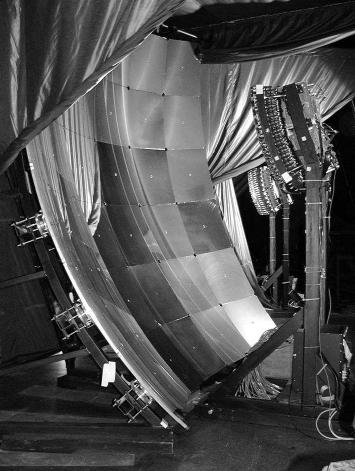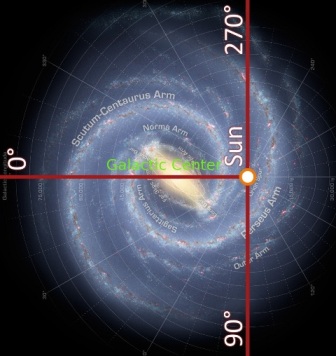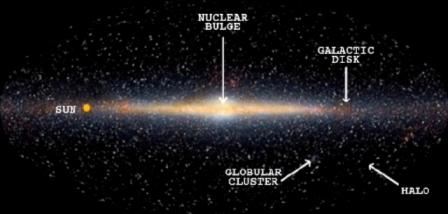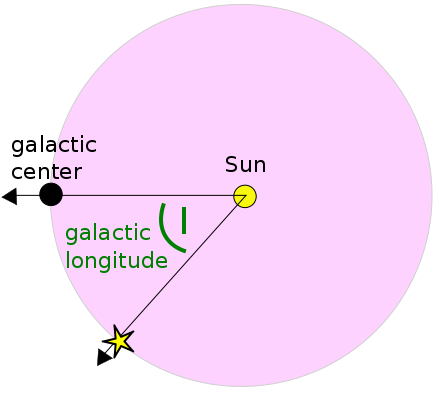 |
|
| Home | |
| Victor Hess | |
| Auger Project | |
| Coord.systems | |
| Terrestrial | |
| Galactic | |
| Celestial | |
| Space weather | |
| Unix Time | |
| Projects | |
| Ask me | |
| Contact | |
Galactic coordinates

Figure 1: The spiral structure of the Milky Way.
image from:http://www.nasa.gov/multimedia/imagegallery/image_feature_1455.html |
The Milky WayThe Milky Way is composed of about 200 to 400 billion stars in a spiraled arrangement.The Solar System is not located in the center of this disk-shaped structure (see Figure 1). A special coordinate system is very useful for investigations on our Milky Way. This coordinate system is based on the shape and other special features of the Milky Way (see Figures 2 and 3). |

Figure 2: Our galaxy as seen from above. The angles are longitudes in the
galactic coordinate system.
image credit:http://www.mnh.si.edu/exhibits/evolving-universe/galaxy/gmap.html |

Figure 3: Our galaxy as seen from the side.
image credit:http://www.mnh.si.edu/exhibits/evolving-universe/galaxy/gmap.html |
The galactic coordinate systemThe galactic coordinate system disregards celestial equators and celestial poles. The center line of the Milky Way determines the galactic equator. The galactic longitude of a star is defined as the angle between the baseline of the center of the Galaxy and the Sun and the line between the star and the Sun. The galactic longitude l is measured in degrees (0° to 360). The galactic latitude b (0° to +-90°) represents the angle between the line of sight from the Sun to the star and the galactic plane. The Sun revolves about the Center of the Galaxy in clockwise direction given the Galactic North Pole as a viewpoint. The period of the sun's revolution is about 240 million years. |
|

Figure 4: Projection into the galactic plane showing the galactic longitude
relative to the Sun. |

Figure 5: NGP: North Galactic Pole, SGP: South Galactic Pole
l: galactic longitude b: galactic latitude |
|
The 3D coordinates "galactic longitude" and "galactic latitude" can be transformed to 2D coordinates (Aitoff projection). |
|